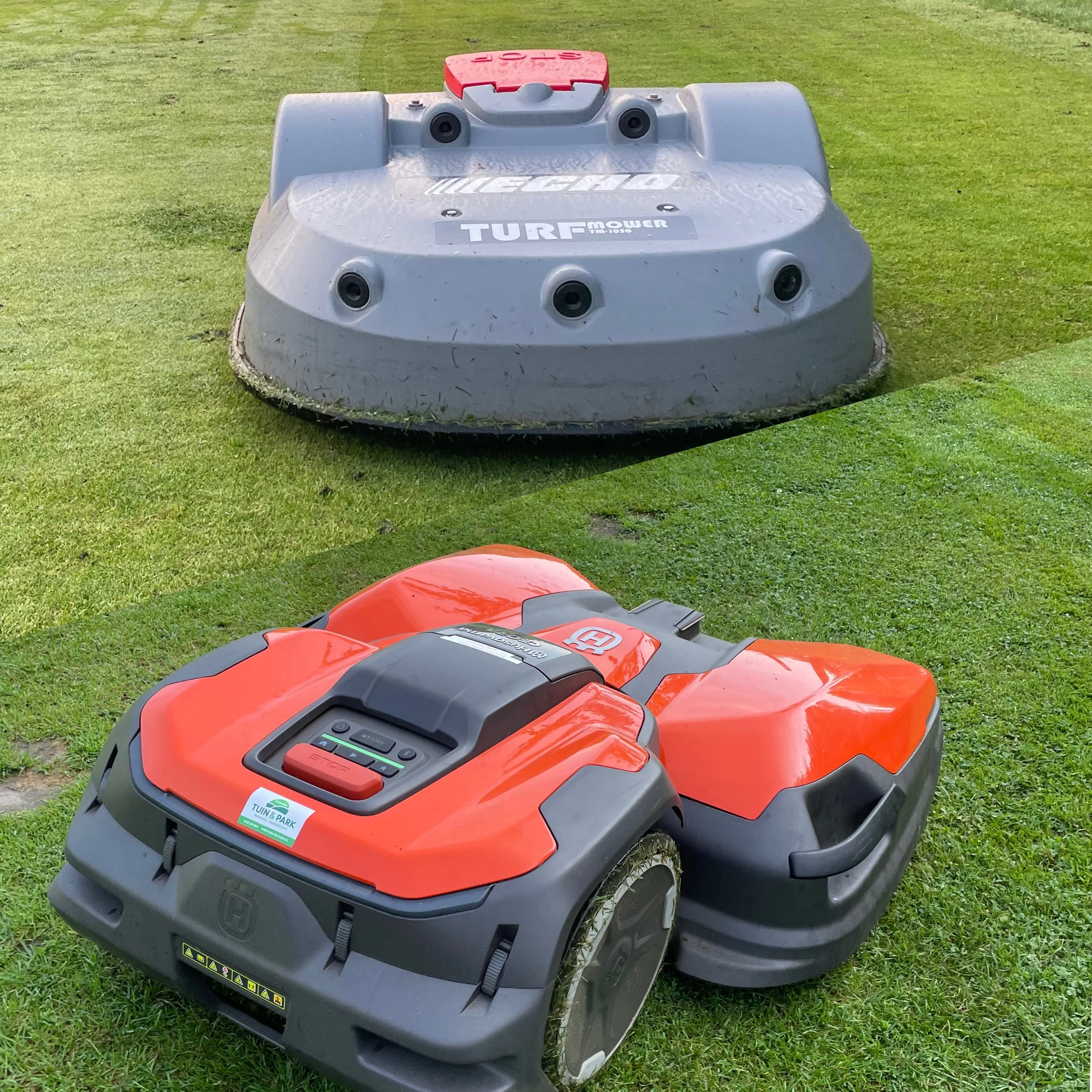🤖 Golf Course Robots Helping Greenkeepers: What We’re Learning
Golf course automation is no longer a distant idea — it’s now being actively implemented across clubs in Europe and beyond.
Greenkeeping teams are adapting. As someone who works with this new technology in daily golf course preparations, I’ve seen firsthand how robots are helping (and sometimes challenging) our traditional practices.
In this post, I’ll break down how robots are being used, what benefits they offer, and what greenkeepers and golf course managers need to keep in mind.
🛠️ How Robots Are Being Used on Golf Courses
Modern golf course robots can mow fairways, collect range balls, control rough, and detail aprons and tees. Robots work continuously, quietly managing tasks that used to consume hours of staff time.
At our course, we've tested driving range robots and mowing robots and seen them reduce repetitive manual tasks significantly. In some cases, these systems now handle over 60% of scheduled mowing hours. But there’s more to this than just machinery.
💡 What Robots Are (and Aren’t) Replacing
Robots help us reallocate greenkeeping hours to the jobs that still need a human touch: detail mowing, playability checks, turf health monitoring, and course presentation.
They don’t replace greenkeepers, they free us to do the work that improves the playing experience and reinforces the club’s reputation.
✅ Benefits for Greenkeeping Teams
Fewer repetitive tasks
More time for turfcare
Reduced surface damage due to lightweight robot design
More consistent and playable surfaces with mowing robots
A self-maintained driving range, ensuring 24/7 ball collection
Clubs are also beginning to recognise that automation doesn't replace a team — it empowers it.
Want help evaluating where robots could fit at your course?
⚠️ Misconceptions & Considerations
Some fear that robots will remove jobs or create a cold, mechanical feel on the course.
In practice, it’s the opposite. Robots handle background tasks, while greenkeepers focus on surface quality, member satisfaction, and course improvement.
Key considerations for clubs:
Course layout compatibility
Integration with staffing
Maintenance and servicing needs
📣 Conclusion & Invitation
Golf course robots are not just about efficiency — they’re part of a broader shift toward smarter, more sustainable turfcare.
As machinery costs evolve, the financial picture becomes even more compelling. While traditional greenkeeping machines carry high purchase and maintenance costs, robotic solutions are already proving more economical in the long run. Lower part replacement prices, simplified servicing, and fewer specialised tasks make these machines more cost-effective over time.
What’s more, by reducing your reliance on large fleets and frequent repairs, robotic systems open the door to better course conditions without increasing your operational burden. The result? A better playing surface, happier golfers, and a more financially resilient golf club.
If your club is considering automation or needs help evaluating what will actually work on your course, I’d be happy to share what I’ve seen — and what to avoid.
👉 Start a conversation about robotic turfcare and planning.
Written by Andrew Knott, Founder of Rubra Turf Agronomy
